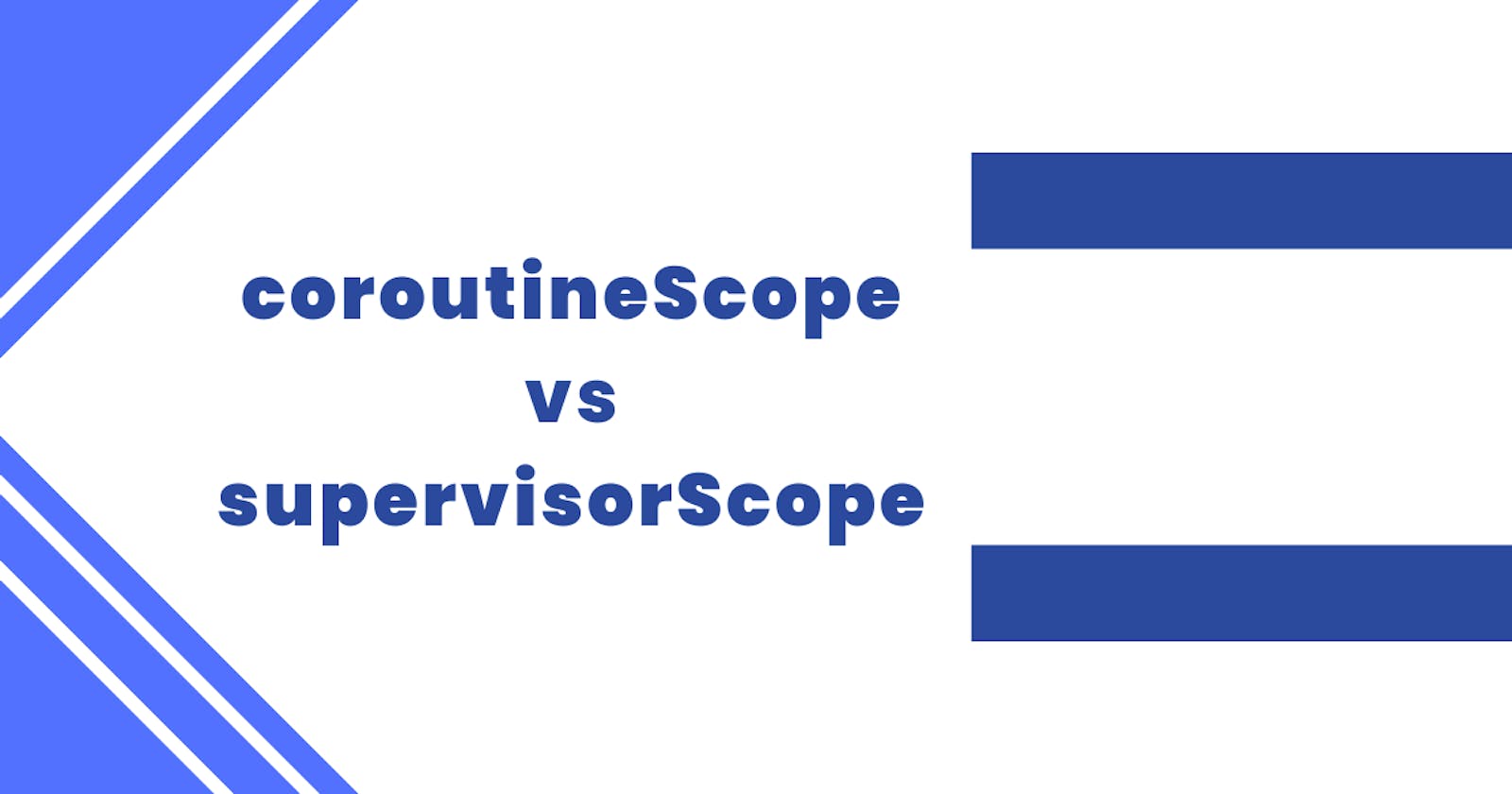I am Amit Shekhar, a mentor helping developers in getting high-paying tech jobs.
In this blog, we will learn about the coroutineScope vs supervisorScope of Kotlin Coroutines.
There is a major difference between the coroutineScope and the supervisorScope, and we must understand that difference otherwise we will make mistakes without knowing what is happening with the Kotlin Coroutines code.
This article was originally published at amitshekhar.me.
As always, I am taking a real example use-case to understand this major difference between the coroutineScope and the supervisorScope.
Example use case:
Suppose, we have two network calls as follows:
getUsers()getMoreUsers()
We want to make these two network calls in parallel to get the data from the server.
You can find the complete source code of this example here.
In Kotlin Coroutines, we use async for doing tasks in parallel.
We can write our code as below:
launch {
try {
val usersDeferred = async { getUsers() }
val moreUsersDeferred = async { getMoreUsers() }
val users = usersDeferred.await()
val moreUsers = moreUsersDeferred.await()
} catch (exception: Exception) {
// handle exception
}
}
Here, we will face one major problem, if any one of the two network calls leads to an error, the application will crash! it will NOT go to the catch block.
To solve this, we will have to use the coroutineScope as below:
launch {
try {
coroutineScope {
val usersDeferred = async { getUsers() }
val moreUsersDeferred = async { getMoreUsers() }
val users = usersDeferred.await()
val moreUsers = moreUsersDeferred.await()
}
} catch (exception: Exception) {
// handle exception
}
}
Now, if any network error comes, it will go to the catch block. This is how coroutineScope helps.
But suppose again, we want to return an empty list for the network call which has failed and continue with the response from the other network call. We will have to use the supervisorScope and add the try-catch block to the individual network call as below:
launch {
try {
supervisorScope {
val usersDeferred = async { getUsers() }
val moreUsersDeferred = async { getMoreUsers() }
val users = try {
usersDeferred.await()
} catch (e: Exception) {
emptyList<User>()
}
val moreUsers = try {
moreUsersDeferred.await()
} catch (e: Exception) {
emptyList<User>()
}
}
} catch (exception: Exception) {
// handle exception
}
}
So now, if any error comes, it will continue with the empty list. This is how supervisorScope helps.
The major difference:
- A
coroutineScopewill cancel whenever any of its children fail. - A
supervisorScopewon't cancel other children when one of them fails.
Note:
- Use
coroutineScopewith the top-leveltry-catch, when you do NOT want to continue with other tasks if any of them have failed. - If we want to continue with the other tasks even when one fails, we go with the
supervisorScope. - Use
supervisorScopewith the individualtry-catchfor each task in addition to the top-leveltry-catch, when you want to continue with other tasks if one or some of them have failed.
This was all about the coroutineScope and the supervisorScope that are present in the Kotlin Coroutines.
That's it for now.
Thanks
You can connect with me on:

